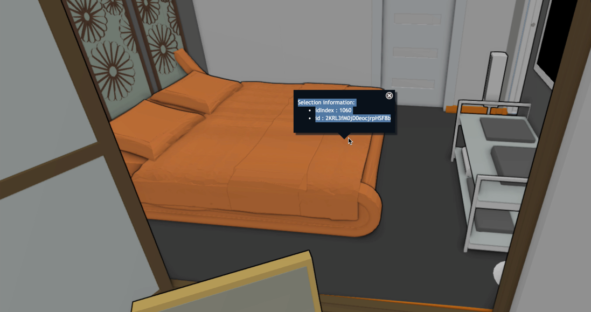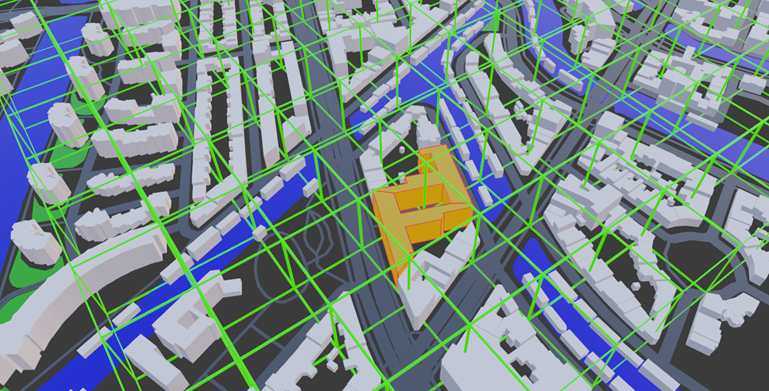Earlier this year, Hexagon released the 3D Tiles Processing Engine for Luciad, which allows users to take 3D meshes of varying complexity and tile them to produce a single coherent dataset that streams easily to the web because it is split into small pieces.
Now, with the release of LuciadFusion 2020.1, that capability has been extended.
The 3D Tiles Processing Engine is geared toward visualization, but a typical dataset contains metadata in the form of identifiers, not just visualization information. We wanted to be able to represent metadata information on output mesh layers, and that’s what we did with LuciadFusion 2020.1.
By default, identifiers and source file names for each element in the source data are now encoded and available in the output 3D Tile dataset.
New Use Cases
This new function opens up possibilities. If complex models, like architectural CAD renderings, have identifiers that provide object separation within a single dataset, you can enable selection out of the box in a client that supports it, such as LuciadRIA.
 Another possible use case involves multiple 3D meshes without metadata. They can be processed into a single-layer dataset while retaining the ability to perform selection operations and get mesh origin information. Within a city mesh, for example, individual houses could be identified.
Another possible use case involves multiple 3D meshes without metadata. They can be processed into a single-layer dataset while retaining the ability to perform selection operations and get mesh origin information. Within a city mesh, for example, individual houses could be identified.
While presenting multiple buildings in one layer has been done before, LuciadFusion 2020.1 is exciting because it allows a single dataset to be multi-level, by default, behind the scenes, and preserve information about multiple identifiers or objects. The attached metadata is spread across the tiles to ensure that client selection happens universally.
Automatic and Customizable
Perhaps best of all, this process can be run automatically so you never have to worry about it. And not only does it allow you to perform selection operations that were previously impossible, but it’s also conducive to customization.
Besides just encoding identifiers and source paths, a freshly added API takes you a step further. You can now take control of your data, mapping identifiers and source file names to whatever output data objects you want.
In addition, you can extract any metadata you like from complex file formats, then include it in the 3D Tiles output so selection and expression-based styling and filtering can be done on the fly.
Getting Started with Guides
Excited to get started with these new capabilities? Good news — we’ve got all the developer tools and guides you need to get started with LuciadFusion 2020.1. For coherence, we’ve collected information on which tools are most popular for converting 3D data from different sources into 3D Tile datasets.
You can still choose which parts of the metadata you want to encode, but the guides will give you the abilities and information you need to do so.
With LuciadFusion 2020.1, you get a clean, smart, highly efficient way of managing and visualizing metadata. To learn more about all the great new features in Luciad 2020.1, read the press release.
















